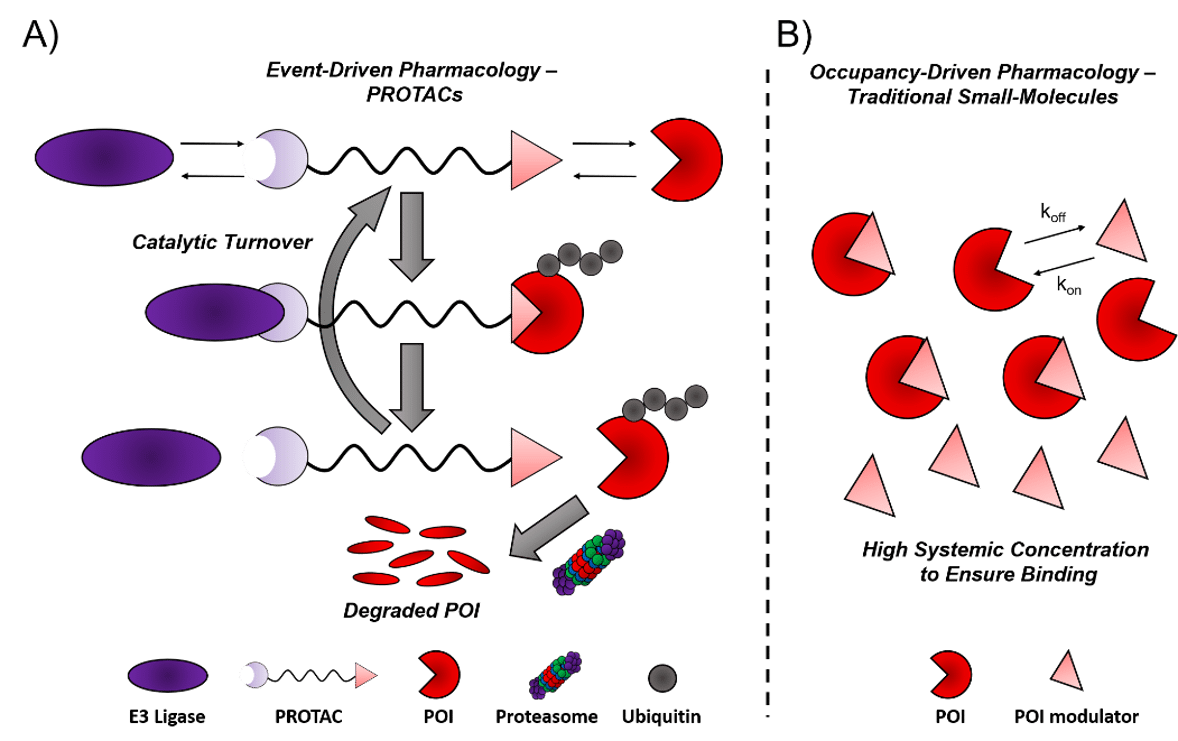
Upgrading Proteolysis Targeting Chimeras (PROTACs): Recent advances in targeted protein degradation technology
2Molecular, Cellular, and Developmental Biology, Yale University, New Haven, CT, USA
3Department of Chemistry, Yale University, New Haven, CT, USA
PROteolysis TArgeting Chimeras (PROTACs) are heterobifunctional small molecules that simultaneously engage an E3 ubiquitin ligase and a protein of interest (POI). The resulting ternary complex enables E3 ligase-mediated POI ubiquitination on nearby lysine residues. The ubiquitinated POI is then recognized and subsequently degraded by the 26S proteasome.
The excitement surrounding PROTACs and similar technologies stems from their mechanism of action. PROTACs operate via an event-driven pharmacological paradigm (Figure 1A), while traditional small molecules function via an occupancy-driven mechanism (Figure 1B). PROTACs function catalytically and transiently hijack the ubiquitin proteasome pathway. Therefore, lower systemic concentrations may be needed clinically. There is also evidence that PROTACs may circumvent other limitations of current small molecule therapeutics, namely drug resistance due to POI overexpression or mutation.
Since publishing the first PROTAC in 2001, the Crews lab has been at the forefront of PROTAC innovation. Recently, we have gained mechanistic insights into PROTAC function by (1) characterizing their catalytic nature and (2) discovering that E3 ligase-PROTAC-POI ternary complex formation can be used to predict efficacy. Additionally, we have shown that promiscuous POI ligands can be used to develop PROTACs that induce degradation of specific POIs. Our group has also expanded the number of protein classes that can be degraded, publishing an EGFR PROTAC late last year. Finally, our group has begun developing the next generation of PROTAC molecules. We believe recruiting new E3 ligases, especially those with tissue or tumour specific expression, will be the next major advancement for this technology. Having the ability to degrade a protein in a tissue or tumour specific manner may give researchers a tool to pinpoint POI loss in desired tissues and improve the therapeutic utility of PROTACs by sparring the POI in non-diseased tissue.

Powered by Eventact EMS